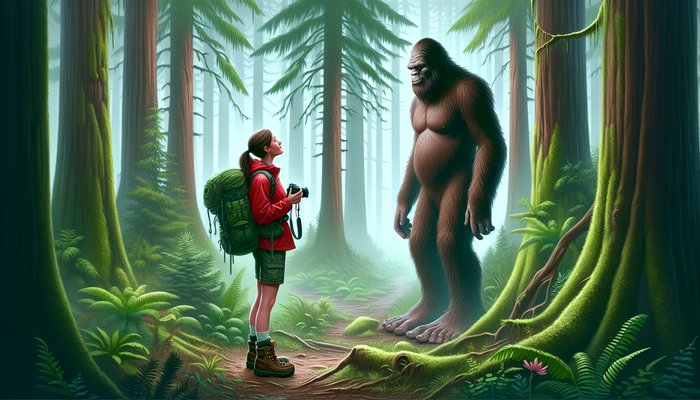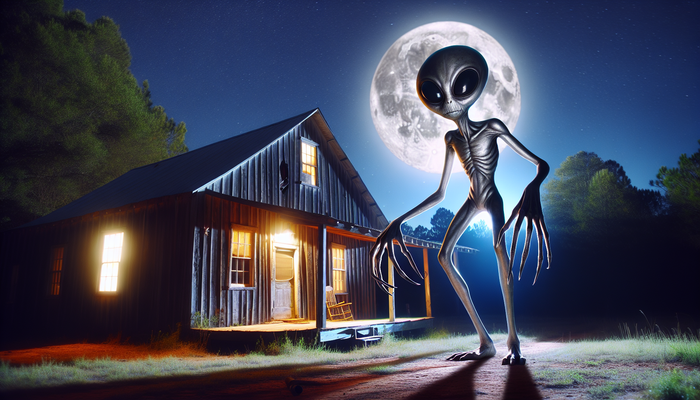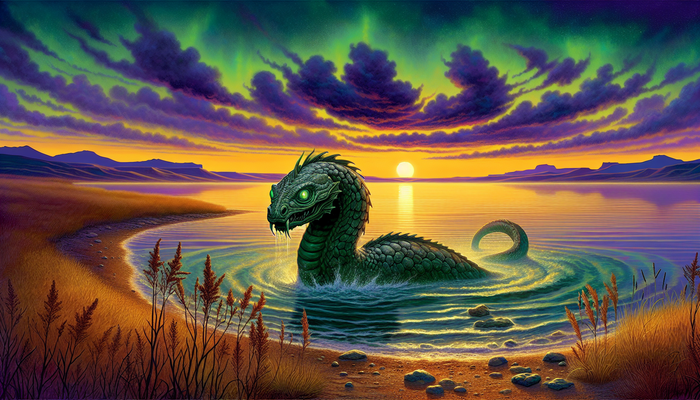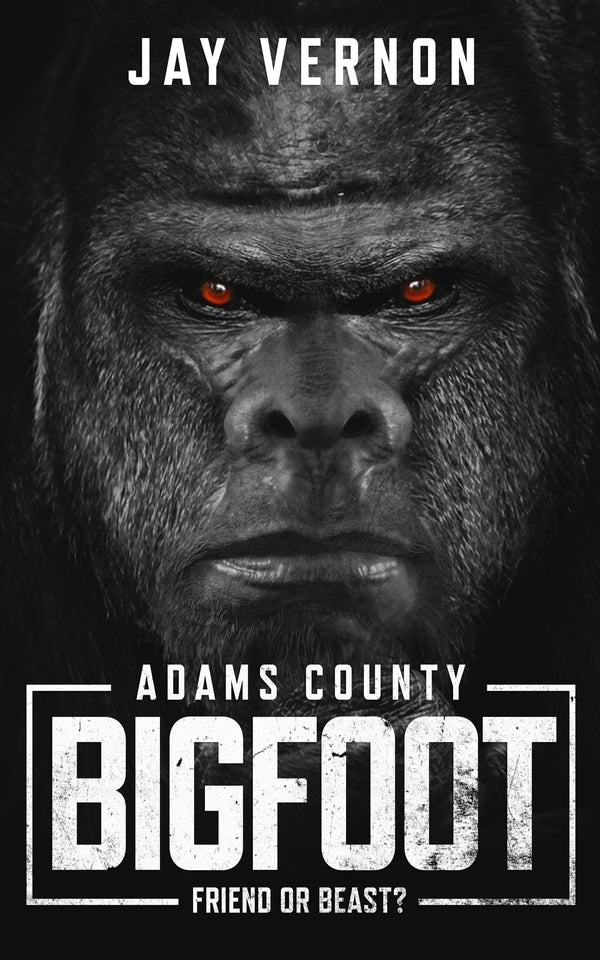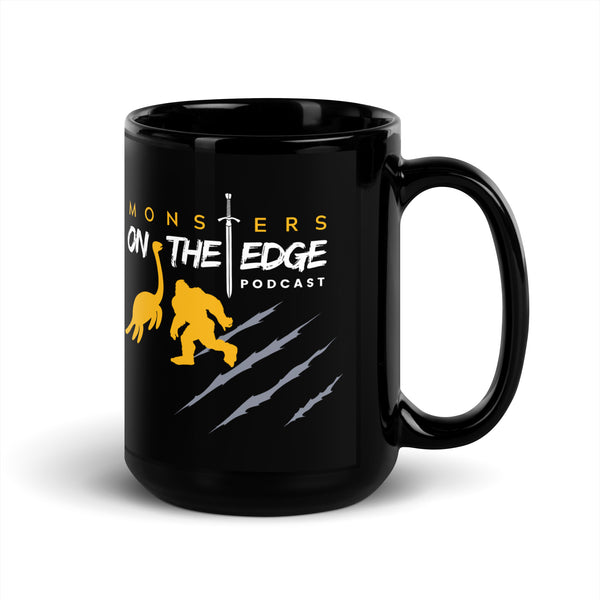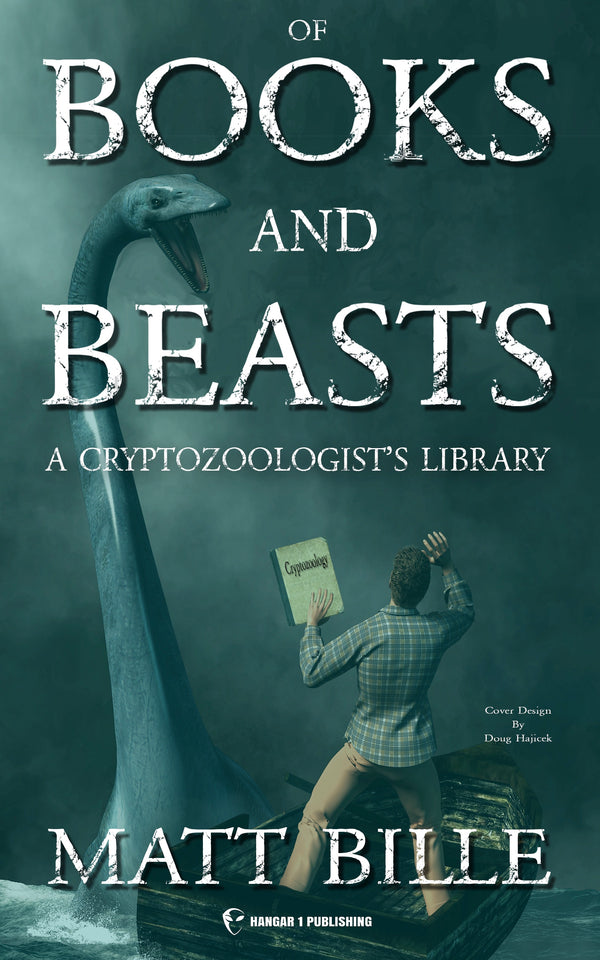Survival Guide for Cryptid Encounters: Navigate the Unknown and Stay Safe
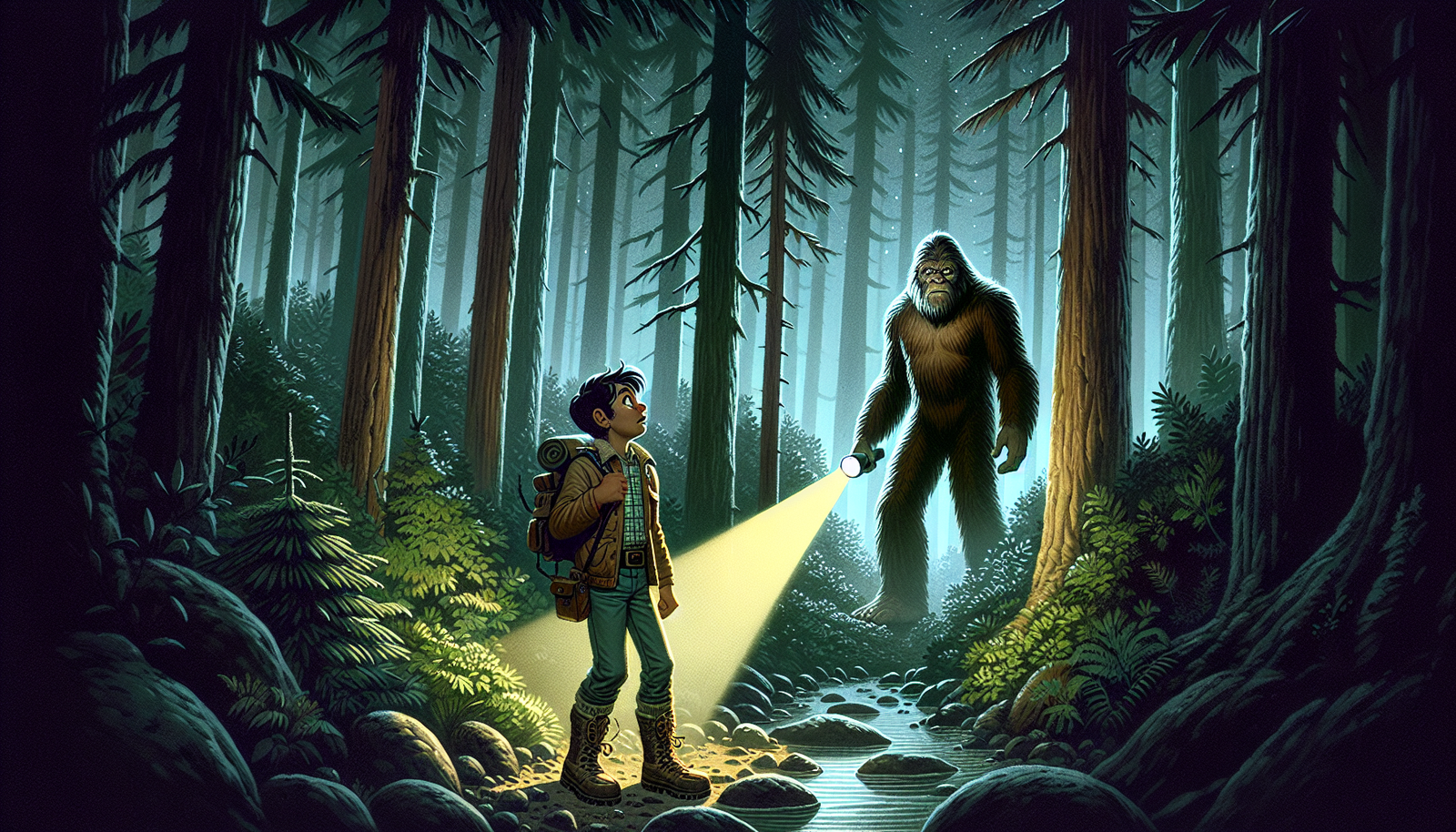
By Lucas Jennings, Cryptozoologist
As the sun dips below the horizon, casting long shadows across the dense forest floor, a twig snaps in the distance. Your heart races, and a chill runs down your spine. Was it just a deer, or could it be something... else? Something that science has yet to acknowledge, but countless eyewitnesses swear exists?
Welcome to the thrilling world of cryptid encounters, where the line between myth and reality blurs, and the unknown beckons with an irresistible allure. As an adventurous naturalist and cryptozoologist, I've spent years exploring the shadowy realm of cryptids - those elusive creatures that dance on the edge of scientific validation, captivating our imaginations and challenging our understanding of the natural world.
Cryptids, by definition, are animals whose existence is based on anecdotal evidence, folklore, or disputed sightings, lacking the concrete scientific proof required for official recognition. From the towering, hirsute figure of Bigfoot stalking through North American forests to the sinuous form of the Loch Ness Monster gliding beneath Scottish waters, these beings embody our deepest fascinations with the mysterious and unexplained.
But what happens when you find yourself face-to-face with one of these legendary creatures? How do you navigate an encounter with something that, according to mainstream science, shouldn't exist? This is where preparation becomes paramount. Understanding how to approach, react to, and potentially survive an encounter with a cryptid is not just a matter of satisfying curiosity - it could be a matter of life and death.
In this comprehensive guide, we'll delve deep into the world of cryptids, arming you with the knowledge, strategies, and mental fortitude needed to navigate these extraordinary encounters. We'll explore the psychology behind our fascination with these beings, the science (or lack thereof) that surrounds them, and the practical steps you can take to prepare for an encounter.
From essential gear and group dynamics to specific protocols for different types of cryptids, this guide aims to be your definitive resource for surviving - and perhaps even documenting - an encounter with the unknown. We'll analyze real-life encounters, drawing valuable lessons from those who've faced the inexplicable and lived to tell the tale.
So, whether you're a seasoned cryptid hunter, a curious skeptic, or someone who simply wants to be prepared for the unexpected, strap in. We're about to embark on a journey into the heart of the unknown, where the impossible becomes possible, and the stuff of legends may just be waiting around the next bend in the trail.
Remember, in the world of cryptids, knowledge is your best defense, an open mind is your greatest asset, and preparedness could be your key to survival. Let's begin our descent into the fascinating, frightening, and utterly captivating world of cryptid encounters.
Understanding Cryptids
To truly prepare for a cryptid encounter, one must first understand what we're dealing with. Cryptids are more than just figments of overactive imaginations or the products of campfire tales gone wild. They represent a fascinating intersection of folklore, cultural beliefs, and the tantalizing possibility that our scientific understanding of the world is far from complete.
The term "cryptid" encompasses a wide range of creatures, each with its own unique characteristics and cultural significance. Let's examine some of the most well-known:
- Bigfoot (Sasquatch): Perhaps the most famous cryptid in North America, Bigfoot is described as a large, ape-like creature standing between 6 to 10 feet tall, covered in dark hair. Sightings have been reported across the continent, particularly in the Pacific Northwest.
- Loch Ness Monster (Nessie): This aquatic cryptid is said to inhabit Scotland's Loch Ness. Descriptions often portray it as a large, long-necked creature reminiscent of a plesiosaur, an extinct marine reptile.
- Chupacabra: Originating from Latin American folklore, the Chupacabra, or "goat-sucker," is known for allegedly attacking and draining the blood of livestock. It's often described as a reptilian creature with spines along its back.
- Mothman: First reported in Point Pleasant, West Virginia in the 1960s, the Mothman is described as a large, winged humanoid with glowing red eyes. Its appearances are often associated with impending disasters.
These creatures, and countless others like them, have become deeply ingrained in local cultures and global popular culture alike. But why are we so drawn to these mysterious beings?
The psychology behind our fascination with cryptids is complex and multifaceted. At its core, it speaks to our innate fear and fascination with the unknown. Cryptids represent the possibility that there are still mysteries to be solved, frontiers to be explored, and discoveries to be made in our seemingly well-mapped world.
This allure is amplified by media portrayals and popular culture. From classic films like "The Legend of Boggy Creek" to modern television shows like "Finding Bigfoot," cryptids have become a staple of entertainment, further fueling public interest and speculation.
But it's not all just folklore and fantasy. The field of cryptozoology attempts to bridge the gap between these cultural phenomena and empirical scientific inquiry. Pioneered by zoologist Bernard Heuvelmans in the mid-20th century, cryptozoology aims to investigate and potentially validate the existence of cryptids using scientific methodologies.
While often dismissed by mainstream science, cryptozoology has had its moments of vindication. Animals once considered cryptids, such as the giant squid and the okapi, have been scientifically confirmed. These discoveries serve as potent reminders that our knowledge of Earth's biodiversity is far from complete.
Notable cryptozoologists like Loren Coleman, Karl Shuker, and the late Grover Krantz have contributed significantly to the field, applying rigorous research methods to the study of cryptids. Their work, while controversial, has helped to elevate cryptozoology beyond mere monster hunting, emphasizing the importance of evidence-based investigation.
Understanding cryptids, therefore, requires a delicate balance. We must approach the subject with an open mind, recognizing the cultural and psychological factors that shape our perceptions of these creatures. At the same time, we need to maintain a critical, scientific perspective, always seeking verifiable evidence and logical explanations.
As we prepare to venture into the realm of cryptid encounters, this understanding forms our foundation. It allows us to appreciate the significance of these beings in human culture and psychology while equipping us with the critical thinking skills necessary to navigate potential encounters.
Remember, whether Bigfoot is stomping through the forest or Nessie is lurking in the loch, our approach to these enigmatic creatures should always be one of respect, caution, and scientific curiosity. In the next section, we'll delve into the practical aspects of preparing for a cryptid encounter, ensuring that you're ready for whatever mysteries the wilderness may hold.
Preparing for an Encounter
When it comes to cryptid encounters, the old adage "fortune favors the prepared" couldn't be more apt. Whether you're an avid cryptid hunter or simply someone who wants to be ready for any eventuality while exploring the great outdoors, proper preparation can mean the difference between a thrilling experience and a potentially dangerous situation.
Research and Knowledge
The first step in preparing for a cryptid encounter is arming yourself with knowledge. Each cryptid has its own unique characteristics, reported behaviors, and preferred habitats. Understanding these details can help you anticipate what to expect and how to react if you do come face-to-face with one of these elusive creatures.
Start by delving into the wealth of resources available on cryptids. Books like "On the Track of Unknown Animals" by Bernard Heuvelmans and "Cryptozoology A to Z" by Loren Coleman and Jerome Clark provide comprehensive overviews of various cryptids and the field of cryptozoology.
Podcasts such as "Monster Talk" and "Cryptonaut Podcast" offer in-depth discussions on cryptids, often featuring interviews with eyewitnesses and experts in the field. Documentaries like "The Mothman of Point Pleasant" and "Hunt for the Skinwalker" can provide visual context and firsthand accounts of cryptid encounters.
Remember, while it's important to familiarize yourself with the lore surrounding these creatures, it's equally crucial to approach this information with a critical eye. Look for patterns in sightings, consider the credibility of sources, and always keep an open mind to both the possibility of their existence and potential alternative explanations.
Essential Gear for Cryptid Encounters
When venturing into areas known for cryptid activity, having the right gear can be crucial. Here's a list of essential items every cryptid enthusiast should consider:
- Flashlight: A powerful, reliable flashlight is indispensable. Opt for one with multiple settings, including a red light option which is less likely to startle wildlife (or cryptids). Always carry spare batteries.
- First Aid Kit: A comprehensive first aid kit is non-negotiable. Include items like bandages, antiseptic wipes, pain relievers, and any personal medications you might need.
- Camera: A high-quality camera with good low-light capabilities can be invaluable for documenting any potential encounters. Consider a trail camera for unattended surveillance of active areas.
- Whistle: A loud whistle can be used to signal for help or potentially deter aggressive creatures.
- Survival Knife: A sturdy, multi-purpose knife can be useful for a variety of tasks, from cutting rope to preparing food.
- Water and Food: Always carry more water and high-energy snacks than you think you'll need.
- Navigation Tools: A map, compass, and GPS device (with spare batteries) are essential for safely navigating unfamiliar terrain.
- Weather-Appropriate Clothing: Dress in layers and be prepared for changing weather conditions.
- Binoculars: For observing potential cryptids from a safe distance.
- Field Journal: To record observations, sketch tracks, or note any unusual occurrences.
Travel in Groups
While the lone cryptid hunter may seem romantic, there's safety in numbers when it comes to exploring potentially dangerous territories. Traveling with a group offers several advantages:
- Multiple observers can corroborate sightings and experiences.
- Group members can assist each other in case of injury or emergency.
- More people means more resources and diverse skill sets.
- The presence of others can provide emotional support in stressful situations.
When forming a group, consider including members with varied expertise - perhaps a naturalist who can identify local flora and fauna, someone with wilderness survival skills, and a person experienced in photography or videography.
Establish clear communication protocols within your group. Decide on hand signals or whistle codes for situations where verbal communication might not be advisable. Also, agree on a plan of action in case the group gets separated.
Mental Preparation
Perhaps the most crucial aspect of preparation is mental readiness. Encountering a cryptid, or even believing you've encountered one, can be an intensely stressful experience. The adrenaline rush, coupled with fear of the unknown, can lead to panic and poor decision-making.
To combat this, practice mindfulness and stress-management techniques before your expedition. Simple breathing exercises, meditation, or visualization can help you maintain calm in high-stress situations.
It's also important to mentally prepare for various scenarios. What will you do if you see a cryptid? How will you react if you hear unusual sounds or find unexplainable tracks? Having a mental game plan can help you respond more rationally in the moment.
Lastly, cultivate a mindset of respectful curiosity. Remember, if cryptids do exist, they are living creatures deserving of respect and caution. Your goal should be observation and documentation, not confrontation or capture.
By thoroughly researching your subject, equipping yourself properly, traveling with a prepared group, and mentally steeling yourself for the unexpected, you'll be well-prepared for whatever mysteries the wilderness may reveal. In our next section, we'll delve into specific protocols for handling cryptid encounters, ensuring you're ready to navigate these extraordinary situations safely and effectively.
Encounter Protocols
Now that we've covered the essentials of preparation, let's delve into the heart of the matter: what to do when you actually encounter a cryptid. Remember, these protocols are based on a combination of wildlife management practices, eyewitness accounts, and the reported behaviors of various cryptids. While every situation is unique, these guidelines can help you navigate an encounter as safely as possible.
Assessing the Situation
The moment you realize you're in the presence of a potential cryptid, your first priority should be to assess the situation calmly and thoroughly. This initial evaluation will inform all your subsequent actions.
- Identify the cryptid's awareness and behavior: Is the creature aware of your presence? Does it appear agitated, curious, or indifferent? Understanding its current state can help you predict its next move.
- Evaluate your surroundings: Take note of your environment. Are there any natural barriers or potential escape routes? Is there higher ground you could reach for a better vantage point?
- Check your group: If you're with others, ensure everyone is accounted for and aware of the situation. Establish silent communication if possible to avoid startling the cryptid.
- Mental check: Take a deep breath and try to calm your nerves. Clear thinking is crucial in these moments.
Avoiding Eye Contact
In many animal encounters, direct eye contact can be perceived as a threat or challenge. While we can't be certain how all cryptids might interpret eye contact, it's generally safer to avoid it.
- Use peripheral vision: Train yourself to observe the cryptid without looking directly at it. This skill takes practice but can be invaluable in tense situations.
- If you must look, do so briefly: Quick glances are less likely to be interpreted as aggressive than a prolonged stare.
- Keep your head slightly lowered: This posture can make you appear less threatening.
Remember, avoiding eye contact doesn't mean losing awareness of the cryptid's position or actions. Maintain a keen sense of where it is and what it's doing at all times.
Backing Away Slowly
If the cryptid hasn't shown aggression and you feel it's safe to move, your next step should be to slowly create distance between yourself and the creature.
- Move slowly and deliberately: Sudden movements can startle or provoke the cryptid. Each step should be careful and measured.
- Maintain awareness: As you back away, be mindful of your surroundings. The last thing you want is to trip or back into an obstacle.
- Stay facing the cryptid: Even as you retreat, keep your body oriented towards the creature. This allows you to monitor its behavior and react if necessary.
- Use natural barriers: If possible, try to put large objects like boulders or trees between you and the cryptid as you retreat.
Making Noise
In some situations, making noise can be an effective deterrent. However, this strategy should be used judiciously, as it could also attract unwanted attention or aggravate the cryptid.
- Start low and increase volume: Begin with low, calm tones and gradually increase the volume if the cryptid doesn't respond.
- Use a variety of sounds: Mix up your noises. Some cryptids might respond to human voices, while others might be deterred by mechanical sounds like a whistle or air horn.
- Be consistent: Once you start making noise, keep it up until you're at a safe distance. Sudden silence might prompt the cryptid to investigate.
- Group noise: If you're in a group, coordinate your noise-making efforts for maximum effect.
Using Gear Wisely
The gear you've brought along can be invaluable during an encounter, but it must be used thoughtfully.
- Flashlight: In low-light conditions, a flashlight can help you navigate and potentially deter a cryptid. However, sudden bright lights might also startle or aggravate some creatures.
- Camera: If it's safe to do so, try to document the encounter. However, don't let the desire for a great shot override your safety concerns.
- Whistle: A whistle can be used to signal for help or as a deterrent. The sharp, unfamiliar sound might discourage a curious or aggressive cryptid.
- Survival knife: While it should be an absolute last resort, your knife could be used for self-defense if necessary.
Knowing When to Fight or Flight
In most cases, slowly backing away while making noise is your best option. However, there may be extreme situations where you need to decide between standing your ground or making a run for it.
- Flight: If you have a clear escape route and the cryptid isn't in active pursuit, running might be your best option. Head for open areas or locations where you can get help.
- Fight: Fighting should only be considered as a last resort when escape is impossible and you believe your life is in immediate danger. Use whatever tools you have at your disposal and aim for vulnerable areas like the eyes or nose.
Remember, the goal of any cryptid encounter should be peaceful observation and, if possible, documentation. Aggression should only be a response to immediate, life-threatening danger.
By following these protocols, you'll be better equipped to handle a cryptid encounter safely and responsibly. In our next section, we'll explore some unique cryptid encounters and the survival stories that emerged from them, providing real-world context for these guidelines.
Unique Cryptid Encounters and Survival Stories
Throughout my years of research and fieldwork, I've come across numerous accounts of cryptid encounters. These stories, while often met with skepticism, provide valuable insights into the nature of these elusive creatures and offer important lessons for those who might find themselves in similar situations. Let's explore some of the most compelling cases and the survival strategies employed by the witnesses.
The Mothman Encounter
The legend of the Mothman, a winged humanoid creature with glowing red eyes, gained widespread attention in the 1960s in Point Pleasant, West Virginia. One of the most famous encounters occurred on November 15, 1966, when two young couples reported a terrifying experience.
Roger and Linda Scarberry, along with Steve and Mary Mallette, were driving near the "TNT area," an abandoned World War II munitions plant, when they spotted a large creature with glowing red eyes. They described it as gray, with a wingspan of 10 feet, and possessing a human-like form but much larger.
As they sped away, the creature allegedly followed their car, keeping pace even at speeds of up to 100 miles per hour. The couples made it back to town safely but were deeply shaken by the experience.
Survival Insights:
- Trust your instincts: The couples' immediate reaction to flee likely saved them from potential harm.
- Seek safety in numbers: Being in a group provided emotional support and multiple witnesses to corroborate the event.
- Report the incident: By sharing their experience, they alerted others to potential danger and contributed to our understanding of the Mothman phenomenon.
Bigfoot in the Pacific Northwest
The Pacific Northwest has long been a hotspot for Bigfoot sightings. One particularly notable encounter occurred in 1924, known as the "Ape Canyon" incident.
A group of miners, led by Fred Beck, claimed to have been attacked by several "ape-men" at their cabin near Mount St. Helens, Washington. The creatures allegedly hurled rocks at the cabin and tried to break in throughout the night. The miners fired shots at the creatures but claimed their bullets seemed to have little effect.
Survival Insights:
- Seek shelter: The miners' decision to barricade themselves in the cabin likely saved their lives.
- Use available resources: They used their firearms as a deterrent, even if ineffective at harming the creatures.
- Strength in numbers: The group worked together to defend their position throughout the night.
The Chupacabra Incident
The Chupacabra, or "goat-sucker," has been a source of fear and fascination in Latin America since the 1990s. While most reports involve livestock attacks, there have been instances of human encounters.
In 1995, Madelyne Tolentino reported seeing the creature in Canóvanas, Puerto Rico. She described it as having large eyes, sharp fangs, and spikes down its back. The sighting coincided with a series of unexplained animal deaths in the area.
Survival Insights:
- Secure your surroundings: Following the sightings, many residents took extra precautions to protect their livestock and homes.
- Stay informed: The community shared information about sightings and attacks, helping everyone stay alert.
- Seek expert help: Local authorities and wildlife experts were brought in to investigate, demonstrating the importance of professional assistance in unusual situations.
These encounters, while extraordinary, offer valuable lessons in survival and preparedness. They highlight the importance of staying calm, using available resources, and working together in the face of the unknown.
It's crucial to note that while these stories are compelling, they remain anecdotal. As researchers and enthusiasts, we must approach such accounts with a balance of open-mindedness and critical thinking. Each story, whether ultimately proven or debunked, contributes to our understanding of cryptid phenomena and human perception of the unknown.
In our next section, we'll delve deeper into the lessons learned from real-life cryptid encounters, examining how these experiences have shaped our approach to cryptozoology and wilderness safety.
Real-Life Cryptid Encounters: Lessons Learned
The field of cryptozoology is rich with accounts of encounters that challenge our understanding of the natural world. While many of these stories are met with skepticism, they provide valuable insights into human behavior in extraordinary circumstances. By analyzing these accounts, we can extract crucial lessons that may prove invaluable for anyone who finds themselves face-to-face with the unknown.
Analysis of Notable Encounters and Their Outcomes
The Patterson-Gimlin Bigfoot Film (1967):
This famous footage, purportedly showing a female Bigfoot walking along Bluff Creek in Northern California, remains one of the most debated pieces of cryptid evidence.
Key Lessons:
- Documentation is crucial: The film, regardless of its authenticity, demonstrates the importance of having recording equipment ready.
- Maintain composure: Despite their shock, Patterson and Gimlin managed to capture relatively steady footage.
- Follow-up investigation is vital: The pair returned to the site to make plaster casts of the creature's footprints, providing additional evidence for analysis.
The Kelly-Hopkinsville Encounter (1955):
This incident involved a Kentucky family claiming to have been terrorized by small, goblin-like creatures for several hours.
Key Lessons:
- Safety in numbers: The family banded together, providing mutual support and corroboration.
- Seek help: They eventually left to alert the authorities, a wise decision when facing an overwhelming situation.
- Be prepared for skepticism: Despite physical evidence (bullet holes, scratches), their story was met with disbelief, highlighting the challenges faced by those who report cryptid encounters.
The Flatwoods Monster Incident (1952):
Several witnesses in Flatwoods, West Virginia, reported seeing a tall, spade-headed creature with glowing eyes.
Key Lessons:
- Physical reactions are common: Many witnesses reported feeling ill after the encounter, reminding us that such experiences can have physiological effects.
- Environmental factors matter: A lingering mist and strange odor were reported, suggesting that all sensory information should be noted during an encounter.
- Young witnesses can be reliable: The initial sighting was by a group of children, whose accounts remained consistent over time.
The Role of Fear and Adrenaline in Decision-Making
Cryptid encounters often trigger intense fear responses, flooding the body with adrenaline. This physiological reaction can significantly impact decision-making and perception.
- Fight, Flight, or Freeze: Understanding these instinctive responses can help in preparing mental strategies for potential encounters.
- Time Distortion: Many witnesses report that time seemed to slow down or speed up during their encounters. This phenomenon, known as tachypsychia, is a common effect of extreme stress.
- Sensory Overload: The combination of fear and adrenaline can lead to sensory overload, potentially affecting the accuracy of observations.
- Memory Formation: High-stress situations can lead to vivid, long-lasting memories, but can also contribute to memory distortion over time.
Understanding these factors is crucial when analyzing eyewitness accounts and preparing for potential encounters.
The Importance of Documentation and Sharing Experiences
In the age of smartphones and social media, the documentation and sharing of cryptid encounters have taken on new dimensions.
- Immediate Documentation: The ability to quickly capture photos or videos has increased the potential for gathering evidence. However, it's important to balance the desire to document with personal safety.
- Online Communities: Platforms like Reddit, Facebook groups, and specialized forums allow witnesses to share experiences and find support. These communities can provide valuable emotional support but can also influence memory and interpretation of events.
- Citizen Science: Apps and websites dedicated to tracking cryptid sightings have emerged, allowing for real-time data collection and analysis. These tools can help identify patterns and hotspots of activity.
- Media Influence: The portrayal of cryptids in movies, TV shows, and books can shape public perception and potentially influence how witnesses interpret their experiences.
- Ethical Considerations: As we share and analyze these experiences, it's crucial to respect witnesses' privacy and approach their accounts with empathy and open-mindedness.
The lessons learned from real-life cryptid encounters extend beyond mere survival tactics. They offer insights into human psychology, the nature of perception, and the challenges of investigating phenomena that lie outside mainstream scientific understanding.
By studying these accounts critically yet open-mindedly, we can better prepare ourselves for potential encounters, improve our methods of investigation, and perhaps even inch closer to unraveling some of nature's most persistent mysteries.
As we continue to explore the world of cryptids, let us carry these lessons with us. They remind us to approach the unknown with a balance of caution and curiosity, to value the experiences of others while maintaining critical thinking, and to always be prepared for the unexpected. In doing so, we honor the spirit of discovery that drives cryptozoology forward, ever pushing the boundaries of our understanding of the natural world.
Final Thoughts
As we reach the end of our journey through the fascinating world of cryptid encounters, it's clear that the realm of the unknown continues to captivate our collective imagination. From the misty forests where Bigfoot might roam to the murky depths that could hide aquatic enigmas, the possibility of encountering these elusive creatures stirs a primal sense of wonder and trepidation in us all.
Throughout this guide, we've explored the multifaceted nature of cryptozoology - a field that stands at the intersection of science, folklore, and human psychology. We've delved into the importance of thorough preparation, from researching the cryptids you might encounter to equipping yourself with the right gear and mental fortitude. We've outlined protocols for navigating potential encounters, emphasizing safety, observation, and respect for these purported beings and their habitats.
The survival stories and lessons learned from real-life encounters have provided us with valuable insights. They remind us that in the face of the extraordinary, human resilience, quick thinking, and the ability to stay calm can make all the difference. These accounts, whether ultimately proven or not, contribute to our understanding of how humans perceive and interact with the unknown.
As we conclude, it's crucial to reflect on the broader implications of cryptozoology and cryptid encounters. Beyond the thrill of the chase or the fear of the unknown, this field speaks to something fundamental in the human experience - our innate curiosity about the world around us and our desire to push the boundaries of knowledge.
Cryptozoology challenges us to keep an open mind while maintaining critical thinking skills. It reminds us that despite our technological advancements and scientific understanding, there may still be mysteries lurking in the shadows of our world. This balance between skepticism and wonder is not just useful in cryptid research - it's a valuable approach to life itself.
Moreover, the study of cryptids often leads us to a deeper appreciation of confirmed species and the importance of conservation. Many animals once considered cryptids, like the giant squid or the okapi, have been scientifically validated, expanding our understanding of biodiversity. Even when cryptids remain unproven, the search for them often leads to the discovery of new species or increased protection for remote habitats.
As you venture forth, whether you're actively seeking cryptids or simply exploring the great outdoors, carry with you the knowledge and insights gained from this guide. Remember that preparation, respect for nature, and a spirit of inquiry are your greatest assets.
From Bigfoot to UFOs: Hangar 1 Publishing Has You Covered!
Explore Untold Stories: Venture into the world of UFOs, cryptids, Bigfoot, and beyond. Every story is a journey into the extraordinary.
Immersive Book Technology: Experience real videos, sights, and sounds within our books. Its not just reading; its an adventure.


